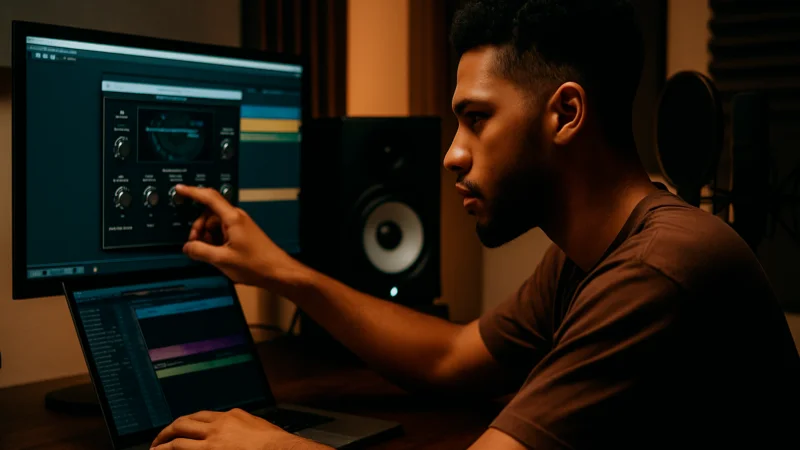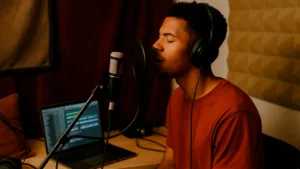
5 Ways to Monetize Your Music (Without Going Viral)
Monetize your music without going viral, learn 5 practical strategies to turn one single into multiple income streams.
If you’re just starting to mix your own tracks, you’ve probably heard about compression in mixing but what does it really mean? And more importantly, how can you use it to make your vocals and beats sound more professional?
In this quick guide, we’ll break down what compression is, why it matters, how to avoid common mistakes, and which free plugins you can use to get started right away.

Compression in mixing is a process that controls the dynamic range of a sound in other words, it evens out the volume so that loud parts get a little quieter and quiet parts get a little louder. This helps your vocals sit better in the mix, your drums hit more consistently, and your overall track sound more polished.
Think of compression like this: if your track is a movie, compression is the editor making sure nothing is too loud or too quiet everything flows smoothly.
Without proper compression in mixing, your vocals might get buried under the beat or spike randomly in volume. Your 808s might hit too hard in some parts and disappear in others. Compression brings balance and makes sure every element of your track plays its role without overpowering the others.
For artists recording at home, good compression makes a massive difference even if you’re working with cheap equipment.
Here’s a simple step-by-step approach to compressing vocals:
Vocals benefit a lot from compression just be sure not to overdo it. If it sounds like the vocal is getting squashed or lifeless, pull it back a bit.
Remember: every sound is different. Trust your ears more than settings.
Start small. Less is often more when it comes to compression in mixing.
You don’t need expensive gear to apply great compression. Here are some powerful, free options:
All of these plugins are beginner-friendly and work in most DAWs (Ableton, FL Studio, Logic, etc.).
Compression in mixing is one of the most powerful tools you have as a home artist. Used right, it can completely transform how professional your music sounds without requiring expensive equipment or a commercial studio.
Focus on learning how it affects your tracks, test with different settings, and train your ears. Over time, you’ll know exactly when and how to use compression to bring your music to life.
If you’re an independent artist looking to improve the quality of your mixes or get professional feedback on your tracks, I offer 1-on-1 custom mix & master services plus exclusive beat production tailored to your style.
Work with me here and let’s level up your sound together.

Monetize your music without going viral, learn 5 practical strategies to turn one single into multiple income streams.

Discover essential vocal recording tips to improve your home studio and capture clean vocals with the mic you already have.

Discover why music artist branding is essential before releasing your first tracks, build recognition and attract loyal fans.

Learn how to release a single with purpose and strategy. Discover how independent artists can turn one song into multiple income streams.